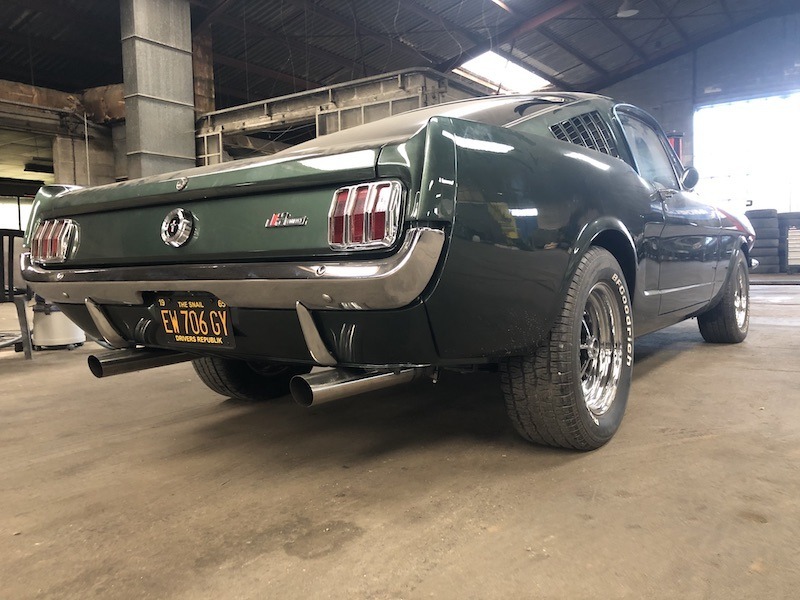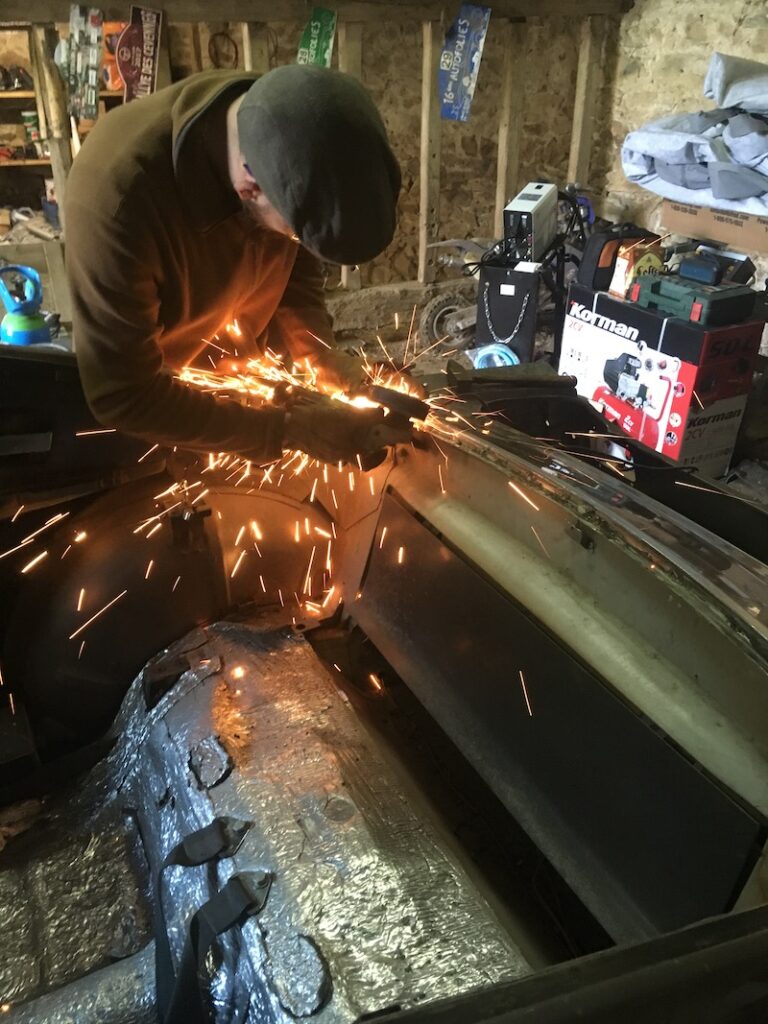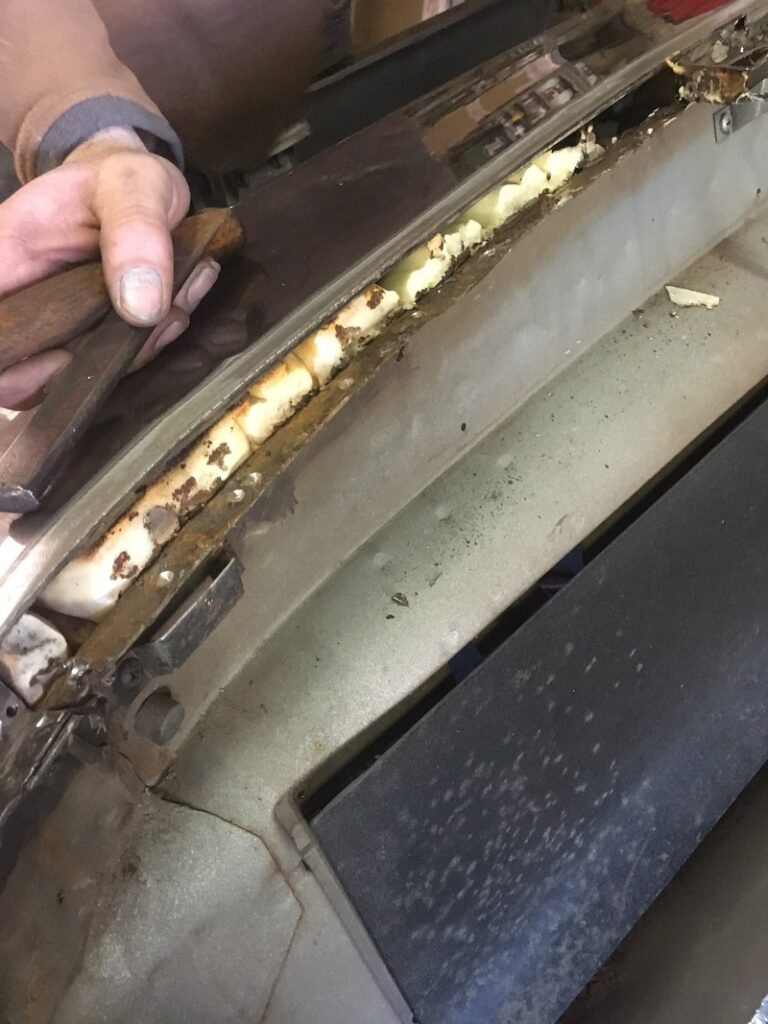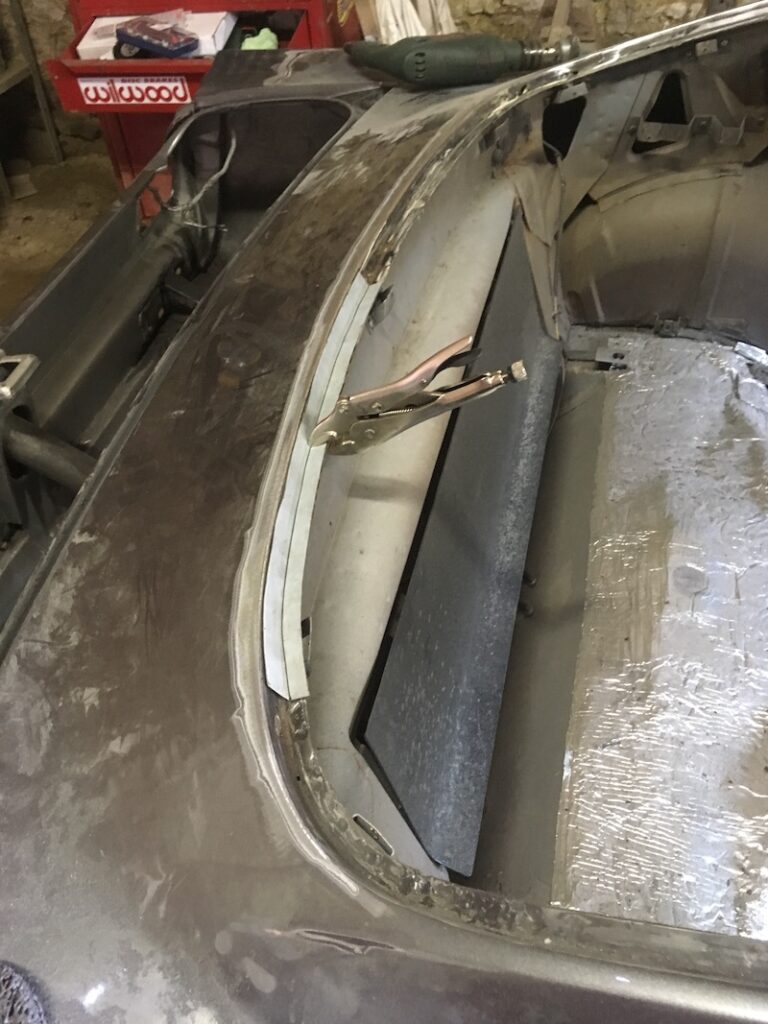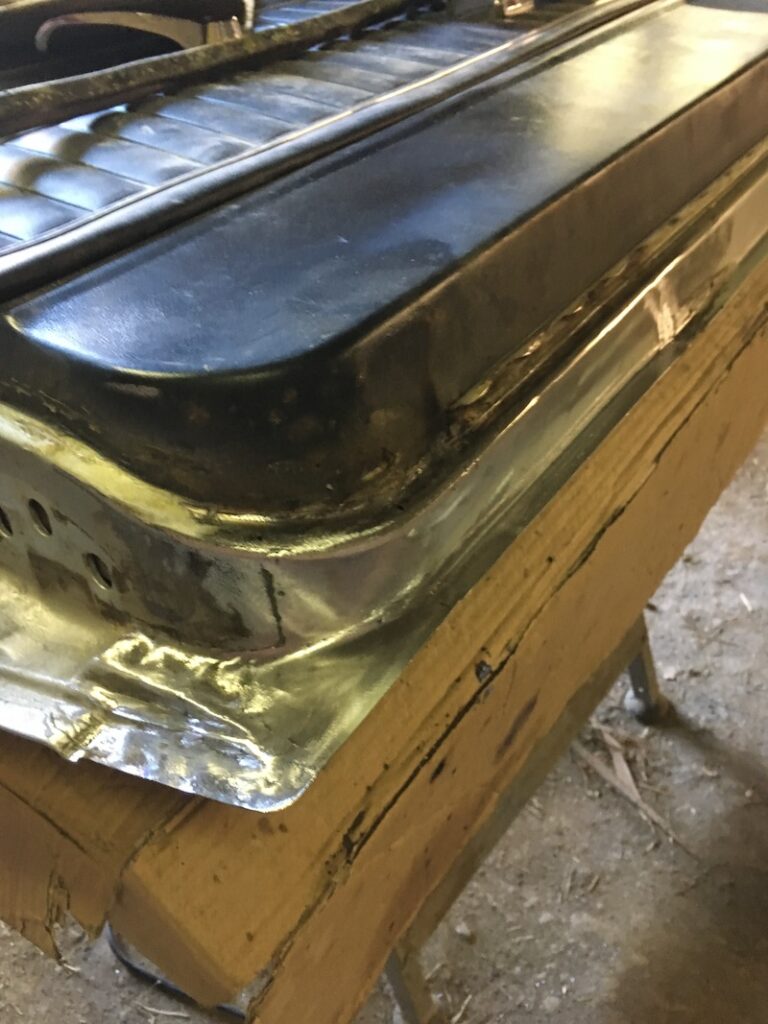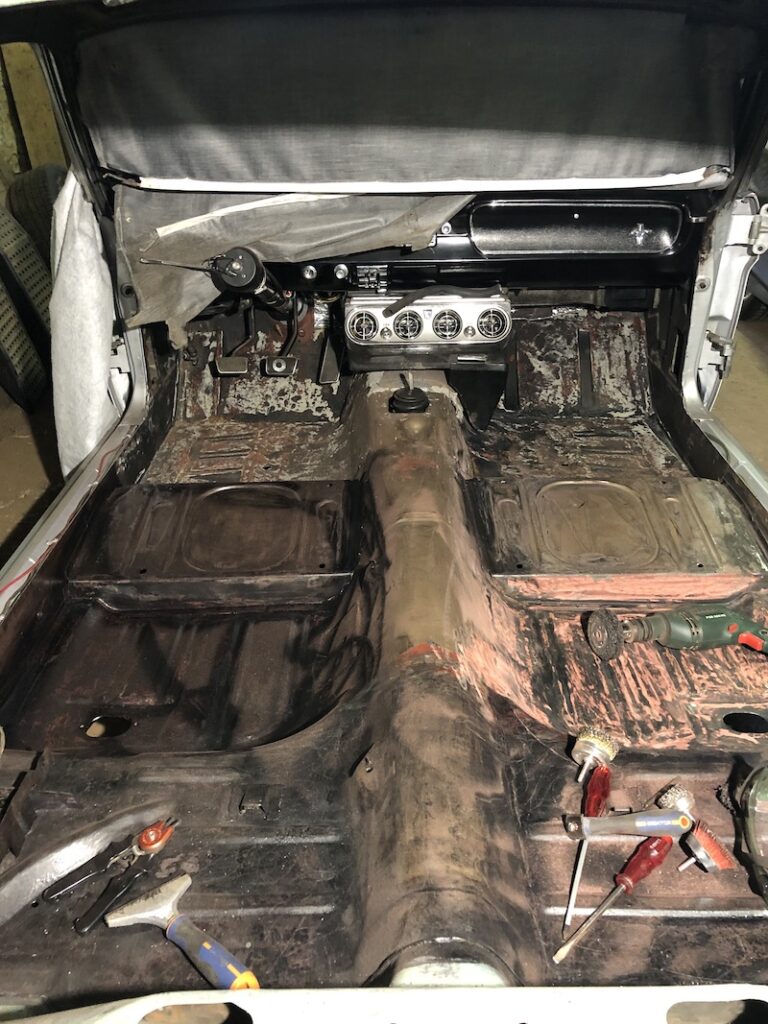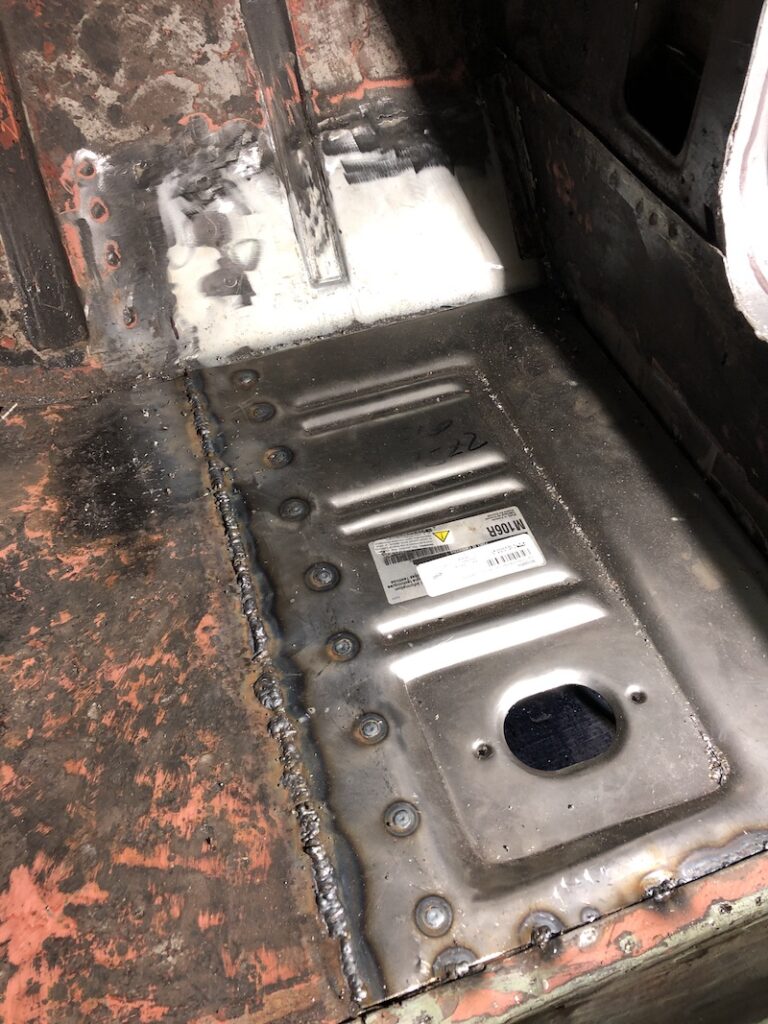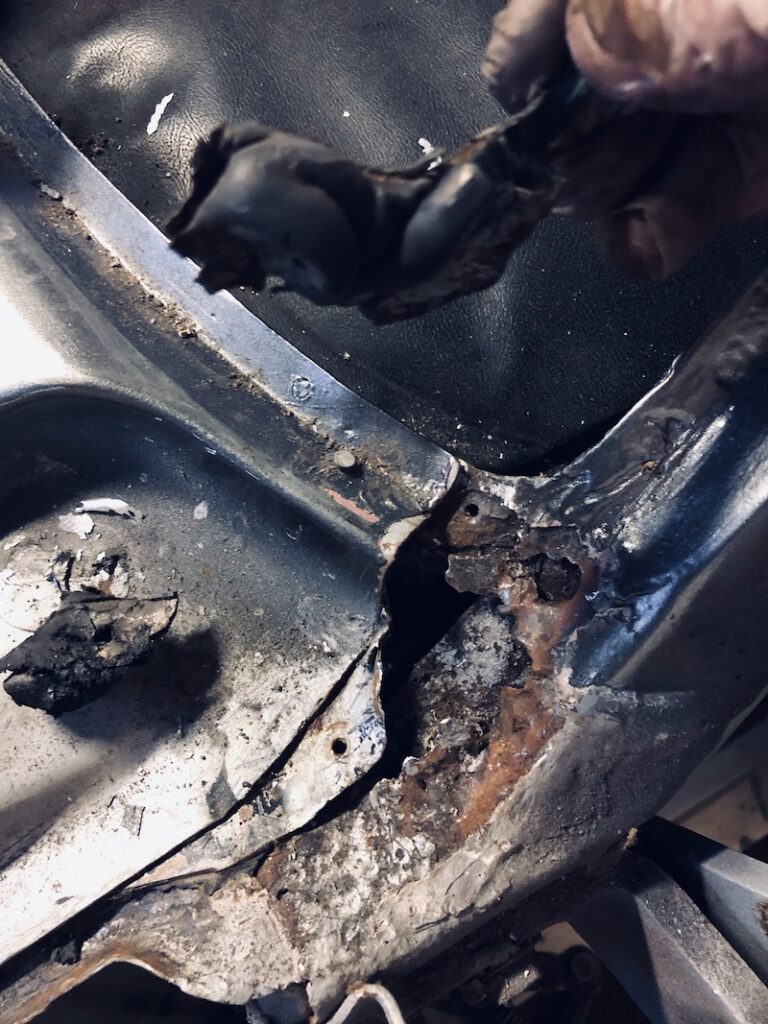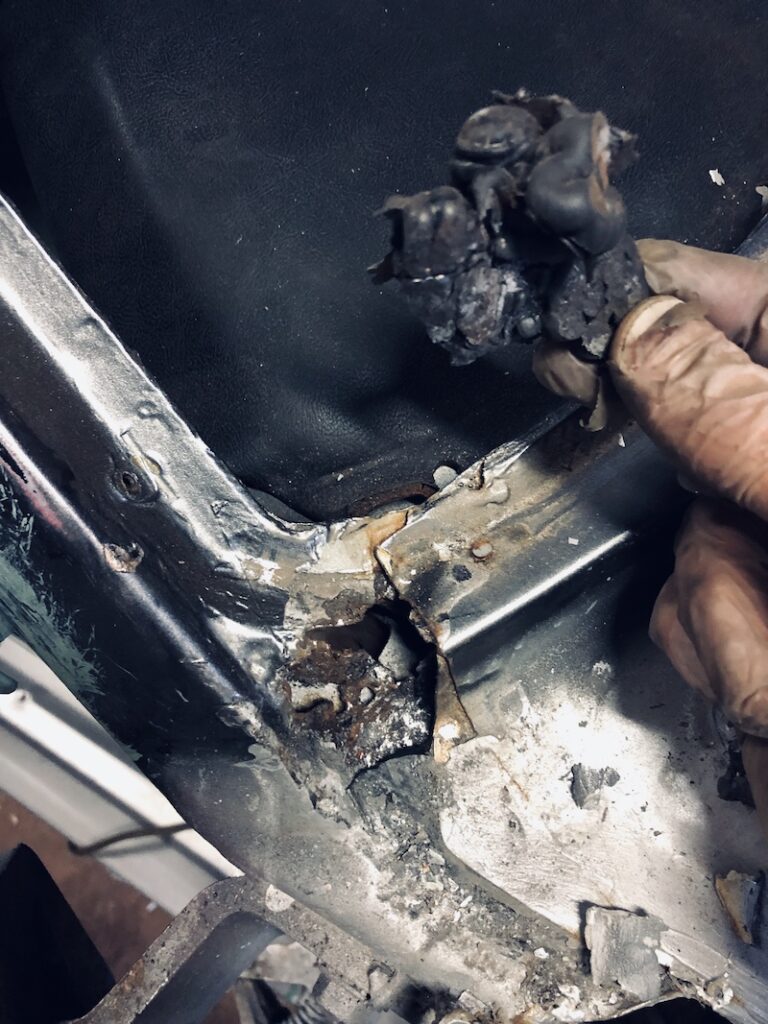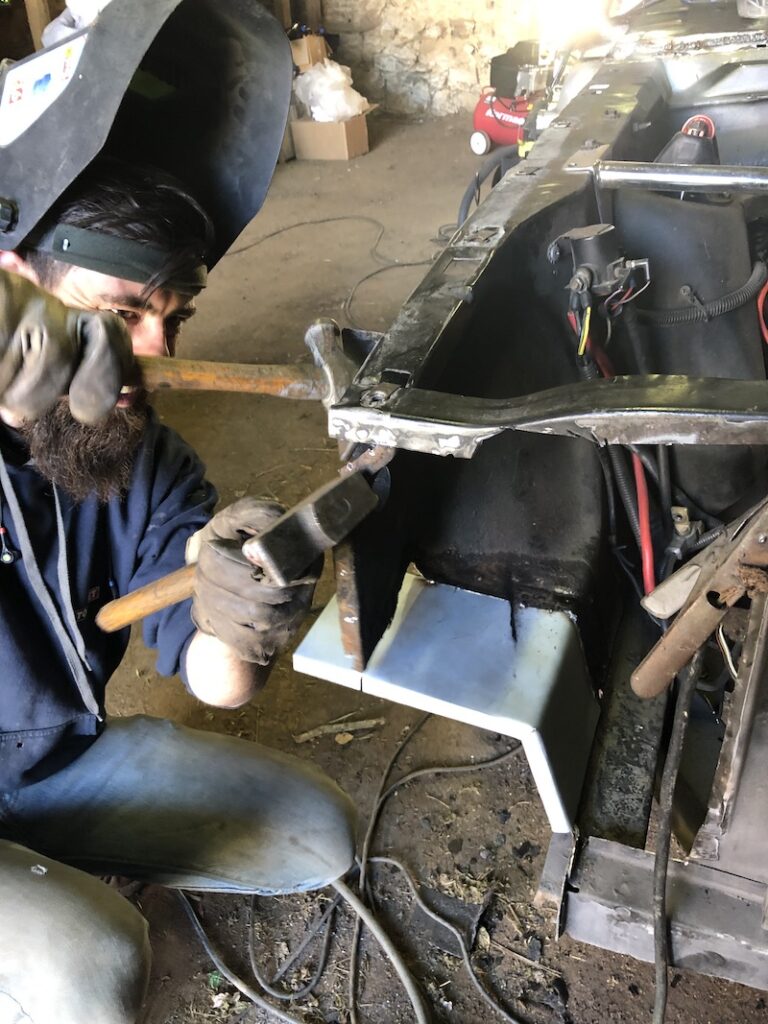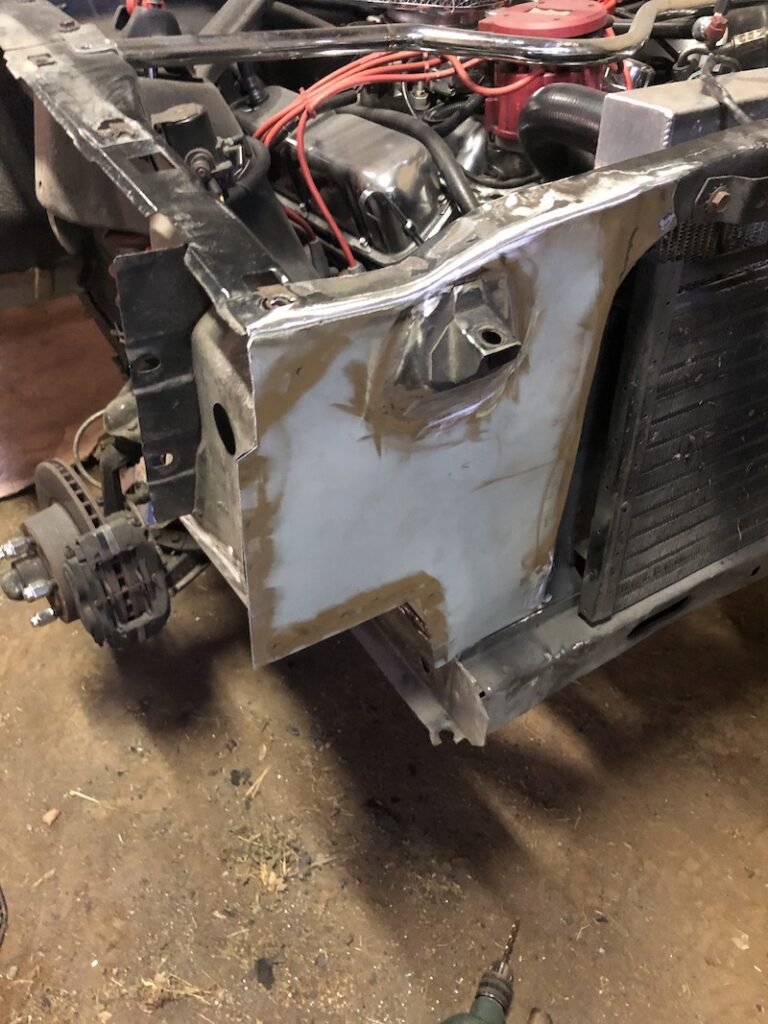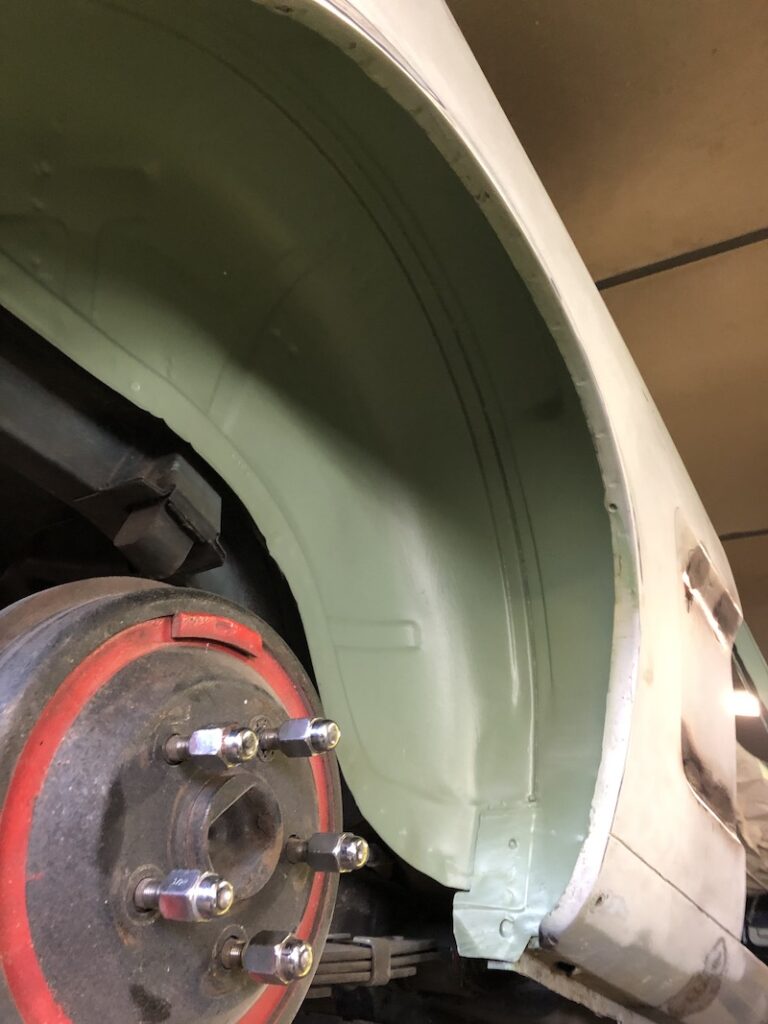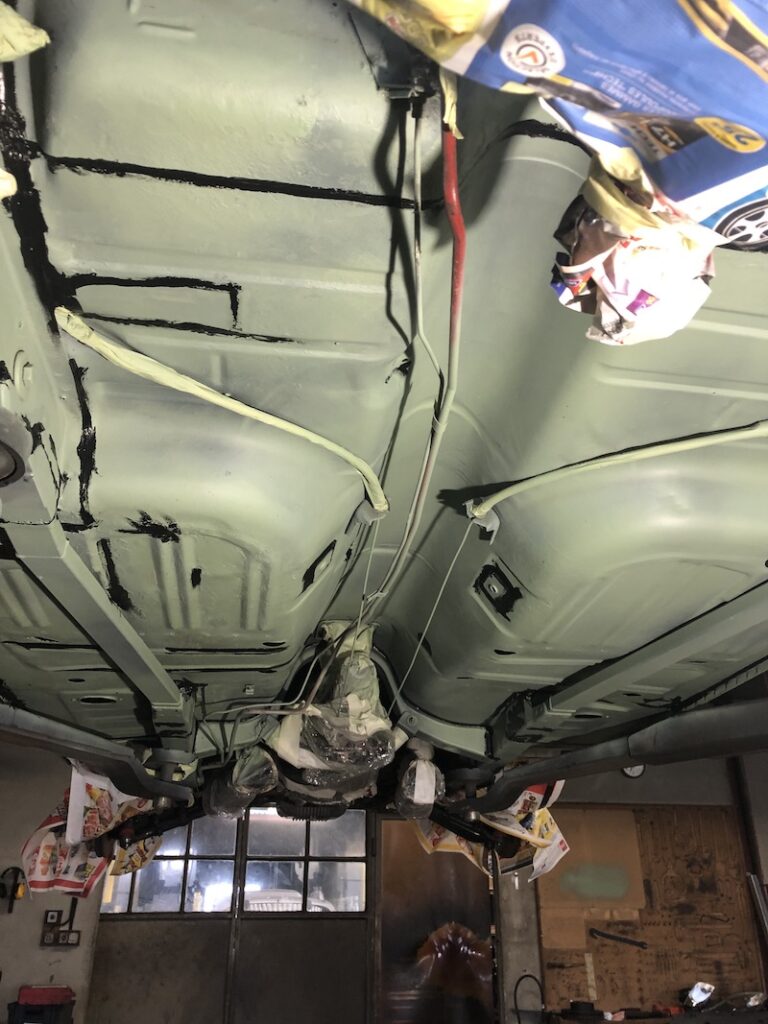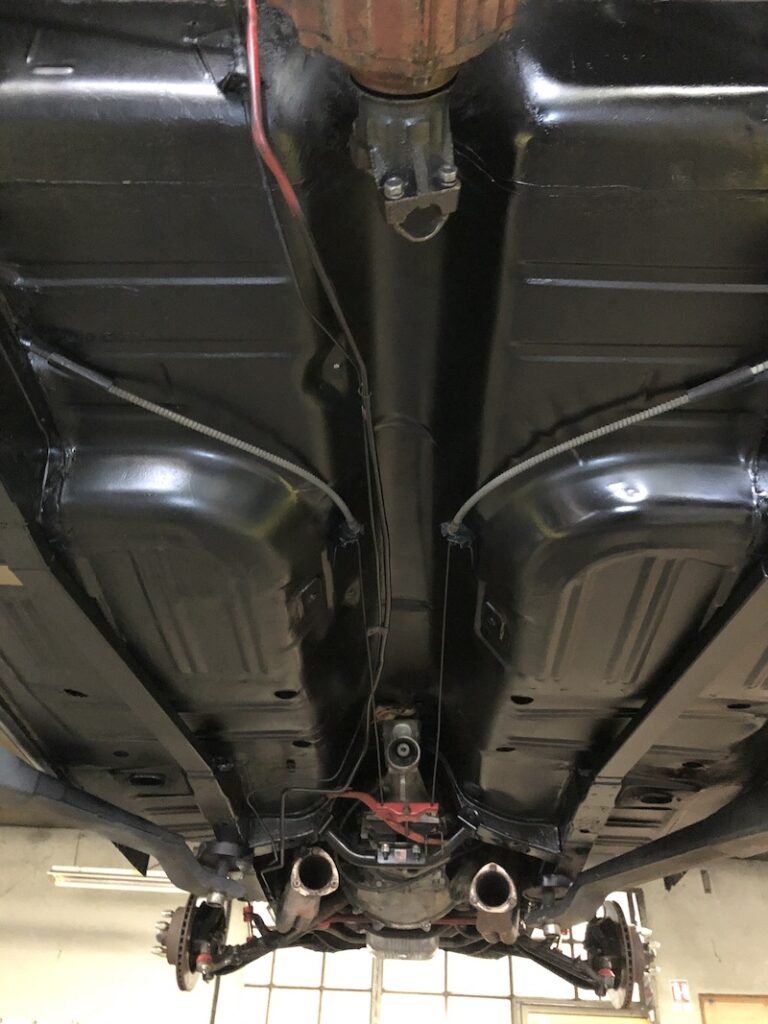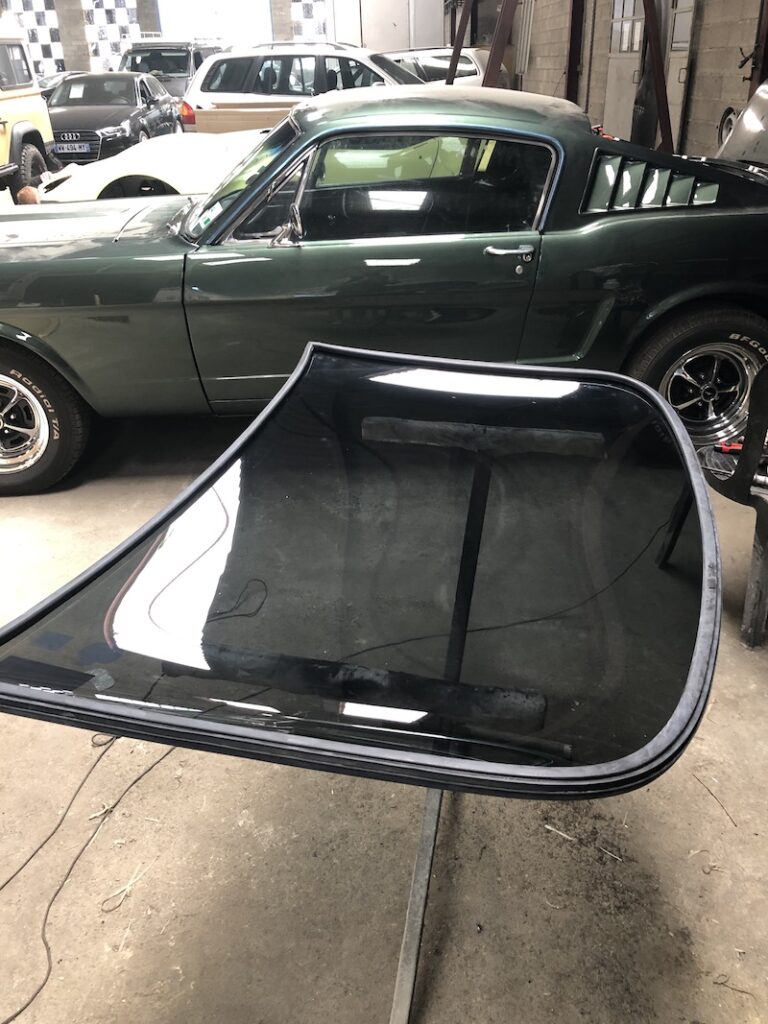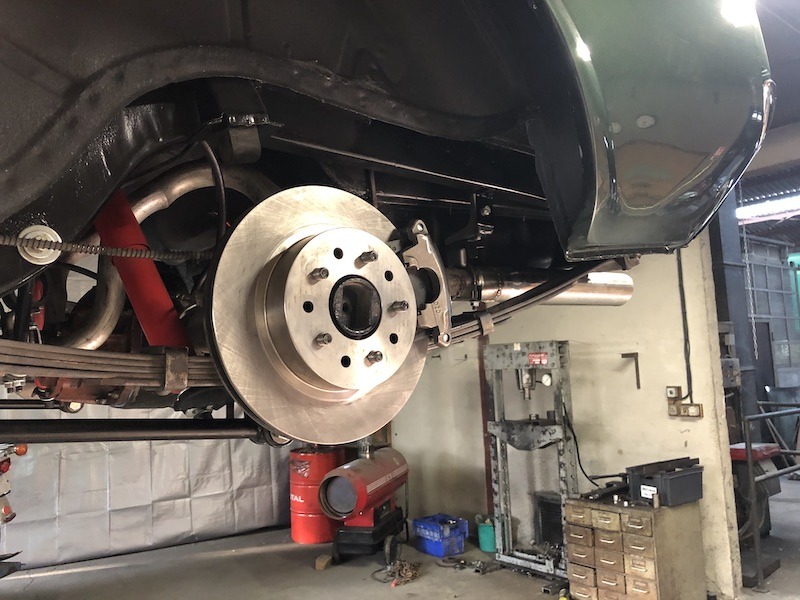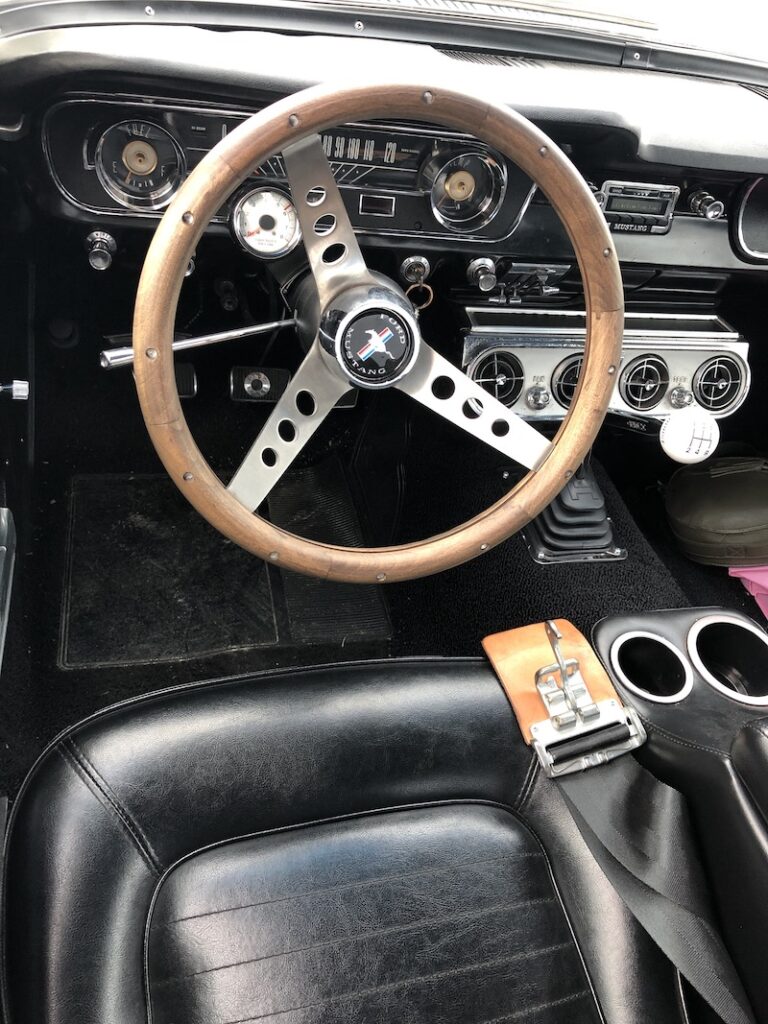Rudy, from Nouvelle Aquitaine, in France, has just completed the restoration of a ‘65 fastback. If he is passionate about cars, and more particularly classic ones, nothing seemed to intend to restore an american car of the sixties… And yet!
Forty-six years old and with a slew of vintage cars on the clock, Rudy has just finished restoring a beautiful Ford Mustang. He had started driving a 504 coupe when he was in college, then restored a 1976 Matra Bagheera S for three years in 2005. On this occasion and during all this time, he could work on this project with a professional. Later, our dear Rudy was interested in Porsches with a 944 turbo then a 911 SC from 1980 before switching to the Triumph side with a TR4 from 1964… and then an Austin Healey from 1965. At that time, Rudy liked American cars for their curves and their engines, but he cannot imagine himself driving one of these cars as what he likes are the road trips on the winding roads of his region. He then thinks that muscle cars are not the most suitable for this type of project…
A purchase for a change
And yet, a part of Rudy is irreparably interested in cars across the Atlantic. After a (successful) experience with a 2005 Lotus Elise SC which develops no less than 220 horsepower (for only 879 kilos!), our neo-Aquitaine friend begins to sternly ogle slightly different automobiles. For him, the Lotus is a lively, efficient, excessively agile car, it’s a real scalpel! And above all, too efficient to ride reasonably! Rudy is faced with a tough choice: if he wants to find a more efficient vehicle (and more risky to maintain his driving license), he will irremediably compare the new vehicle to his Lotus which is, it seems, at the height of his expectations. It was then that he made the decision to make a 180-degree turn: he turned to the Americans! An American yes, but which one to choose? A first specification directs it towards the Chevrolet Corvette C2 and Camaro from before 1969, Ford Mustang from 1965 to 1968 and Dodge Charger. The first is off budget, the second is not his main choice and the last too “muscled” for his needs. Rudy is moving towards a Ford Mustang fastback which represents, for him, all the culture of American muscle cars and the art of living of the sixties. The make, model and bodywork are defined, so it’s time to refine the specifications. The car should be in fair condition and have a manual transmission, Rudy dislikes vintage transmission and likes to use the shifter! His budget being between 35 and 40,000 euros, the offers he sees in France do not suit him. He then begins to look timidly towards the US where he notices that the prices, transport and taxes included, correspond more to his project. He notices an ad, on our good old cocorico classifieds site (le bon coin) that he adds in his favorites: the car seems to stick to its specifications andis in the United States. He checks the offer several times a day and ends up calling the seller on a Saturday night. Rudy knows old cars well and, like many of us, once made a promise to himself: “I would never buy an old car without seeing and trying it out.” You see it coming, Rudy spends an hour and a half on the phone with the current owner describing the car to him. No sooner has he hung up than he makes a first transfer to block the sale! We are then in November 2017, the Mustang is in Baton Rouge, Louisiana.
February 12, 2018. Night has just fallen in New Aquitaine and a transporter arrives in front of Rudy’s house. A dirty and dusty Ford Mustang sits proudly on the bed of the truck. Its battery is dead and Rudy has to ask his neighbors for help to push it into his barn. He has a good time staring at it and, even if it is not to its advantage in this state, it is with a smile on his face that our friend will fall asleep tonight!
A car that has not driven much but a lot of work done
This car came out of the factory fitted with a V8 and 4-speed Top Loader manual gearbox, power steering, fold-down bench seat option and had a black interior and Prairie Bronze body color (code P). Soon after the purchase, Rudy became interested in the past of his new hobby. He discovers the previous owner quite quickly and hastens to send him an email … to which he gets a response! The latter tells him the story of the car. It was delivered in 1965 to New Orleans, Louisiana. It is stored for many years (between 1982 and 2001) in a warehouse without rolling. In the year of the tragic events of the World Trade Center, the previous owner whom Rudy communicates with today bought the vehicle from a friend of his. The latter stores the vehicle without touching it until 2012. After thirty years of standstill, a restoration is undertaken. Now that the owner’s children have grown up, he can devote some time and money to this project. Inside, only the carpet and headliner are replaced. On the mechanical side, the original engine is replaced by a Blue Print “crate engine” 302ci rebored in 306ci 5.0l with aluminum intake pipe developing no less than 390 horsepower and with a torque of 370 nm. The gearbox is replaced by a Tremec T5 World Class, a Heavy Duty ratio 3.50:1 limited slip axle is installed as well as a reinforced RAM high performance clutch, Borgeson power steering, March serpentine belt with machined aluminum mounts, a Champion high volume radiator, etc. The gases escape through a stainless steel Flowmaster exhaust line, the sound of which leaves no one indifferent. The restoration of the bodywork consists of replacing the front fenders, the bumpers, the bonnet as well as the trunk. “Frame connectors” are installed to connect the front and rear side members to stiffen the chassis and handle the new power delivered. On the safety side, Wilwood 4-piston brakes are fitted at the front. Finally, the car is repainted in two-tone, light gray and dark gray (from the 2012 Dodge Ram catalog), the two colors being separated by a Viper red border. After such a restoration, why parting with the racing car you will ask? Well the previous owner has set his sights on a 2010 Mustang Shelby GT500, which allows our friend Rudy to acquire it in this performance configuration.
… and more work in France
When Rudy gets the car back, he quickly realizes that his new car is not the most suitable for French roads in this configuration. The Mustang thus purchased is a true American drag race type but not really made for hill climbs which are however quite common in the region of the new owner. To bring his new passion into line with his expectations, Rudy begins by replacing the existing shocks with adjustable red Koni (the same ones that fitted the Shelby 350s), the front torsion bar with a larger one and the addition of a torsion bar at the rear as well. The car is now more stable in the curves, Rudy notices the assisted steering too… assisted! He discovers a kit to reduce the pressure of the Borgeson pump which suits him more. The silent blocks are replaced by new ones in polyurethane at the rear springs and the front axle is completely refurbished. Inside, a new, smaller steering wheel replaces the old one, as well as a white Hurst shift knob, wider seat belts, a leather pad and chunky racing buckles. It suits our friend for about a year. Unfortunately, every time he rides in the rain, Rudy notices water seeping into the passenger compartment, whether from the rear window or the windshield, the water ends up entering and blisters even appear in the paint level. It was in March 2019 that our enthusiast decided to take an interest in the problem of leaks. He sets out to correct the issues at the rear of the car, but in view of the extent of the damage, the whole car will eventually go through!
A little help is always welcome!
Rudy bares the car, starting at the back and then working up to the front. Everything is stripped. As Rudy rightly says, “Americans are capable of hundreds of thousands of dollars in restorations, but they’re also great at makeup”. He discovers many parts badly damaged by rust, sometimes gaping holes filled with windshield glue… If Rudy had ever restored old cars, he had never played with a blowtorch and worked sheet metal before. His auto body mechanic brother-in-law is teaching him the ropes and Rudy equips himself with a MIG and all the equipment he will need for this new piece of the project. It was during a weekend with his brother-in-law that the transfer of skills took place: “We have two days for you to show me how to do it. When you leave on Sunday, I should be able to continue on my own. ” And that’s what happened. For several weeks, Rudy worked, alone, in his barn on the dirt floor with the Mustang on stanchions. This is how he remakes parts of the floor, stretched out with only 50 centimeters of space and solder balls that fall into his neck. Ten minutes from his home, Rudy has a mechanic friend who follows his work and, seeing the scale of the site and the conditions in which his comrade operates, suggests that he put the Mustang in his garage so that he is more at ease. Now is a good time since the welding is complete and Rudy needs to move on to painting the chassis, and it is much more convenient when you have a bridge! The car is then dismantled, stripped and all rusted or missing parts are replaced. The sheets are passed with Dinitrol then with a phosphating primer and finally a two-component polyurethane paint is applied to the entire frame (underpinnings then interior). Rudy then turned his attention to the interior with the replacement of the rear seat, the headliner and the painting of all the elements of the cabin. Door mechanisms are disassembled, greased and repainted when necessary before reassembly. The painting of the body is entrusted to a professional. For the color, Rudy chooses Ivy Green from the Ford catalog of the time. All body, windshield and rear window gaskets are replaced with new ones. On the mechanical side, the axle is redone, the box power steering is replaced by another Unisteer rack, the rear drum brakes are removed to make room for discs and the master cylinder is replaced by a new Wilwood, more powerful but not assisted. The car is fully reassembled and tie rods (traction bar) are added to improve the behavior of the car during acceleration. The car has been fully restored. The emphasis has been on reliability and performance while maintaining an original look. New and, for the most part, modern equipment cannot be seen at first glance, either outside or in the interior. Certain elements marked by time have been preserved to bear witness to the car’s past such as, for example, the scratched door handles, the dashboard with paint chips, etc. For Rudy, the goal is not to have a show car but a healthy car, which presents well and ready to swallow the miles rather than sitting behind a window.
An uncertain future
The restoration will have taken over a year and a half and approximately 540 hours of work. Rudy recorded each of them in an Excel file! If he intends to keep his Mustang for now, Rudy is well aware of the demons that haunt him and he is not ruling out the resale of his now successful project in the months or years to come. It would be an opportunity for him to set off on a new car experience. Our friend is aware, however, that this project has taken his time and having four seats in this car allows him to go for a trip or a family weekend, with his two daughters. For him, his passion is one thing, but what matters most is the sharing it generates with those close to him. He enjoys working on his mechanical projects, he enjoys riding with them, but above all he takes pleasure in sharing these moments with those close to him. If Rudy is to learn a lesson from this experience, it is undoubtedly that he had to work on his patience, which was not his strong point. Not only because it took him some for the restoration, but especially when he had barely finished it that he had knee surgery with a driving ban for six weeks…


